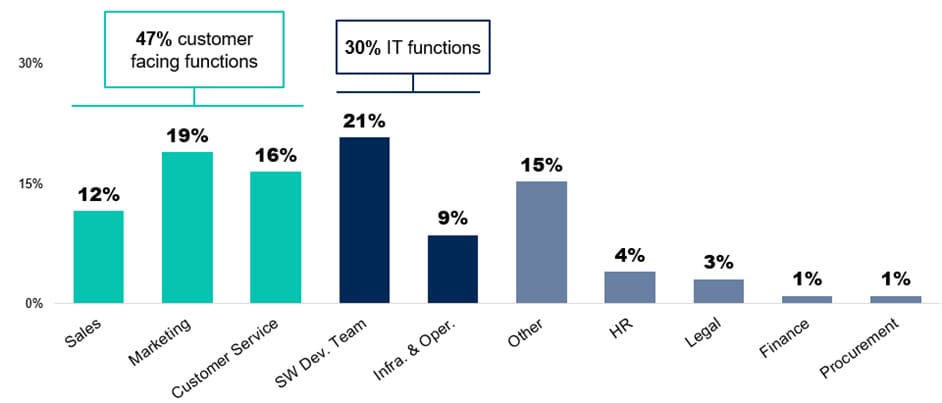In a Gartner poll of more than 1,400 executive leaders, 45% reported that they are in piloting mode with generative AI, and another 10% have put generative AI solutions into production. This is a significant increase from a March to April Gartner poll in which only 15% of respondents were piloting generative AI and 4% were in production.

“Organisations are not just talking about generative AI – they’re investing time, money and resources to move it forward and drive business outcomes,” said Frances Karamouzis, distinguished VP analyst at Gartner. “In fact, 55% of organisations reported increasing investment in generative AI since it surged into the public domain ten months ago. Generative AI is now on CEOs’ and boards’ agendas as they seek to take advantage of the transformative potential of this technology.”
GenAI investments outweigh the risks
Seventy-eight per cent of respondents believe that the benefits of generative AI outweigh its risks. This is higher than the 68% who reported this sentiment in the earlier poll.
“Executives are taking a bolder stance on generative AI as they see the profound ways that it can drive innovation, optimisation and disruption,” said Karamouzis. “Business and IT leaders understand that the ‘wait and see’ approach is riskier than investing.”
GenAI investments scaling across multiple business functions
The poll found that 45% of enterprises are scaling generative AI investments across multiple business functions, with 22% scaling across more than three different functions. Software development is the function with the highest rate of adoption or investment in generative AI, followed closely by marketing and customer service (see Fig. 1).
Figure 1. Generative AI investment by Business Function

Growth initiatives were cited as the primary business focus of generative AI investments by 30% of respondents, followed by cost optimization (26%) and customer experience/retention (24%).
“Many organisations began their AI journey with an overemphasis on cost optimization and efficiency,” said Karamouzis. “Savvy enterprises have moved beyond this to focus initiatives on efficacy, quantifiable value and business agility in products and services. This ensures visibility, trust and synergy among stakeholders, and most importantly, alignment to business outcomes.”





